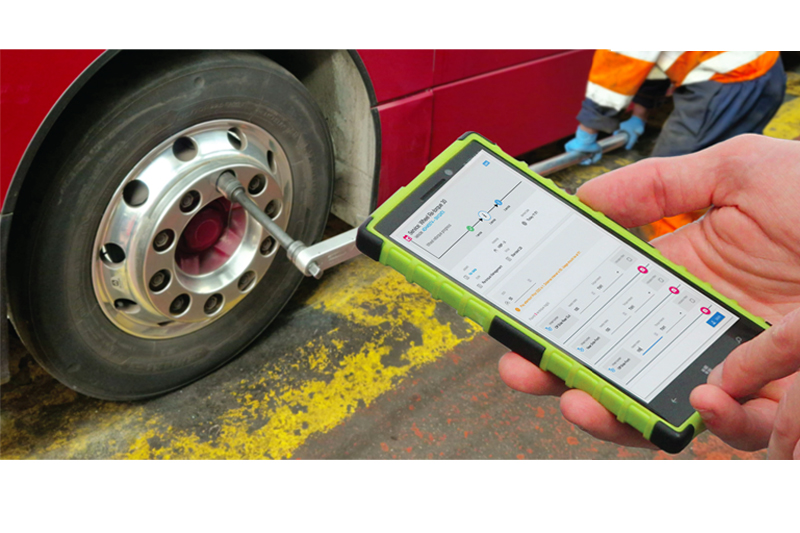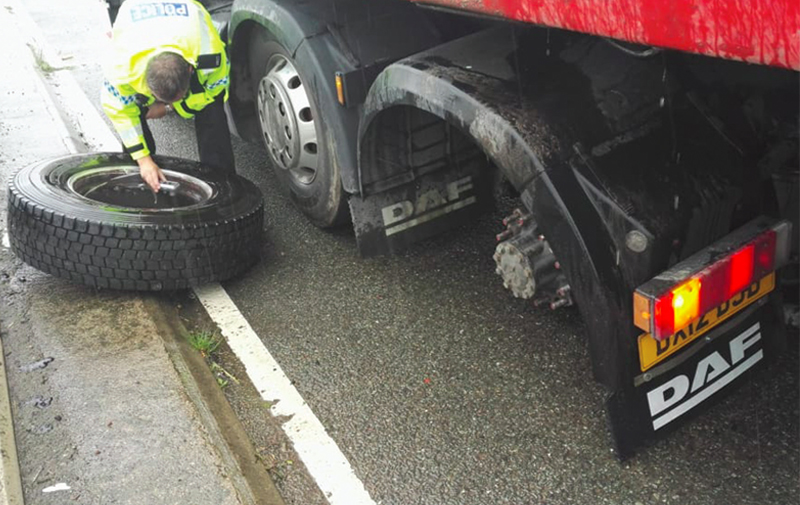
Wheel loss is a serious issue that poses a significant risk to road safety but checking that every nut on every wheel is an easily overlooked task. CVW looks at a new app that simplifies this.
Anyone who has seen a wheel come off a truck knows how frightening it can be. Even if the truck is travelling at a moderate speed – perhaps only 50mph – any wheel that comes off will accelerate and bounce several metres into the air so that anything it hits will be smashed by a force of several tonnes. Understandably, a “wheel loss incident” will trigger a DVSA investigation that could cost the operator its licence.
Freeway Fleet Systems has come up with a way of avoiding “lost wheel incidents” that you can fit in your pocket. It is a handy app that eliminates paperwork and simplifies the management of the wheel torque and re-torque process. The fully-digital solution, which is accessible on a smartphone, provides a simple way to manage the re-torque process following any wheel disturbance, wherever vehicles happen to be.
Challenging task
Following correct wheel nut re-torque procedures is an important part of any vehicle safety management system but managing and reporting re-torque events remains a tedious manual process.
“Wheel nut re-torquing is a real headache for operators as it is often required after the vehicle has left the workshop and maybe at a completely different location,” says Patrick Tandy, managing director of Freeway.
“We’ve already digitised every conceivable aspect of the workshop – job cards, driver safety inspections, stores and purchasing to name a few – but re-torquing has been the most challenging. In fact, we see this development as the final frontier in the automation of fleet maintenance management.”

Re-torquing is typically required after 30 minutes and again a day later or after a specified distance travelled, for example, 30 minutes after the wheel is replaced and again between 40 and 80 kilometres travel. In the workshop the Freeway Re-Torque app is used to record the initial wheel disturbance. The technician is guided through the torquing procedure with the recording of torque settings and the torque wrench used, backed up with photographs to record the work. Re-torque events are then assigned to a job card and engineer with the software automatically scheduling the re-torquing at the specified intervals. The app shows the current status; overdue, done or scheduled.
Any authorised person can access the app from their smartphone so vehicles that have arrived at another depot can be dealt with by those onsite. Instructional documentation can be linked to the re-torque work events and accessed directly from a mobile device. This ensures that engineers are provided with the right knowledge to do the job correctly every time and to be fully compliant with any specific standard operating procedures. Depending on the set up, users may be blocked or warned if, for example, the torque wrench was the same as the one used for the previous torquing.
Wheel loss is a serious issue that can have catastrophic consequences so apps such as this might well be a vital tool in cutting the risk of them happening, enabling fleet operators to protect their drivers and make our roads safer for all.









